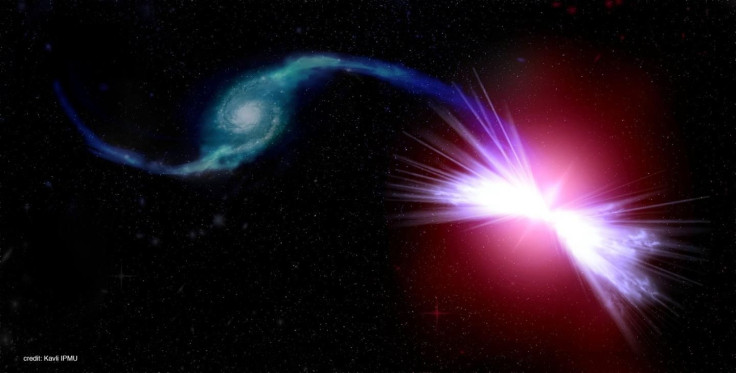Supermassive Black Hole-Induced ‘Galactic Warming’ May Explain Why Galaxies Become Barren

It’s a conundrum of truly cosmic proportions — what factors decide whether a galaxy will turn into an active, star-forming one or a quiescent graveyard where barely any stars are born? A team of international researchers have now taken a step toward solving this longstanding mystery, and the answer, it turns out, is black holes.
According to a new study published in the journal Nature, low-energy supermassive black holes in a class of galaxies known as “red geysers” may be creating and fuelling fierce interstellar winds that suppress star formation by heating up ambient gas. This so-called “galactic warming” prevents gas from cooling and condensing, thereby turning many galaxies to a cosmic graveyard of sorts.
“Stars form from the gas, a bit like the drops of rain condense from the water vapor. And in both cases one needs the gas to cool down, for condensation to occur. But we could not understand what was preventing this cooling from happening in many galaxies,” co-author Michele Cappellari from the department of physics at Oxford University, said in a statement. “But when we modeled the motion of the gas in the red geysers, we found that the gas was being pushed away from the galaxy centre, and escaping the galaxy gravitational pull.”
For the purpose of this study, the researchers observed a near-dormant distant galaxy named “Akira.” They found that the galaxy’s supermassive black hole, which is powered by the gas influx from a companion galaxy named “Tetsuo,” is capable of producing a wind with enough mechanical energy to heat ambient, cooler gas and suppress star formation.
Researchers now believe that Akira and other galaxies like it are part of a class known as “red geysers,” which are rich in old, red stars and lack the younger blue ones.
“This phenomenon, discussed in the paper with reference to Akira, appears surprisingly common and could be generally applicable to all quiescent galaxies,” the researchers said in the statement.
© Copyright IBTimes 2025. All rights reserved.






















